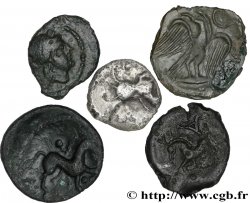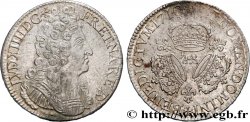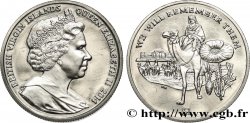E-auction 485-396250 - locc23088 - Roman coins and archaeology, Collected papers - MONETA 32 REECE Richard
Чтобы принять участие в торгах, вы должны войти в систему и стать подтвержденным участником аукциона. Войдите, чтобы сделать ставку. Ваш аккаунт будет подтвержден в течение 48 часов. Не ждите до закрытия торгов, чтобы зарегистрироваться.Сделав ставку на данный товар, вы вступаете в юридическое соглашение на покупку выбранного товара и нажатием кнопки «Сделать ставку» подтверждаете принятие вами условий интернет-аукционов cgb.fr.
Ставка может бить сделана только в полном эквиваленте евро. Торги закроются согласно времени, указанному в описании товара, все ставки, сделанные после закрытия торгов, учитываться не будут. Не следует откладывать предложение вашей ставки до последнего момента, так как система может не успеть обработать вашу заявку, и ваша ставка не будет принята. Более детальную информацию вы найдёте здесь: FAQ по интернет-аукционам.
БЕСПЛАТНО.
БЕСПЛАТНО.
| Оценить : | 45 € |
| Цена : | 21 € |
| Максимальная предлагаемая цена : | 21 € |
| Конец торгов : | 01 August 2022 19:59:30 |
| Участников : | 3 Участников |
Автор: REECE Richard
Издатель: MONETA 32
Состояние: Livre d'occasion en parait état de conservation, couverture légèrement défraîchie
Язык: anglais
Описание: Wetteren 2003, 21 x 29,7, 364 pages, cartes, graphiques
Вес: 1074 g.
Комментарий
Richard Reece first worked on Roman coins as a schoolboy of 16 and his first publications of coins from an excavation were those of a student (of Biochemistry). As a teacher of Chemistry he worked on the 56,000 coins from the Roman shore-fort at Richborough in Kent (UK). Then as teacher of Archaeology in the Institute of Archaeology in London from 1970 to 1999 he worked on a series of studies of Roman coins from excavations in Britain and abroad. Many of these papers were published in conference volumes, in Festschriften, or in British periodicals which are not always available today.
Over the years he has developed a method of looking at coins found on excavations so that the coins have become an essential part of archaeological analysis. But the study has also involved looking at the coins themselves in an effort to extract the maximum information from them. The methods have changed and developed over time so it was thought a good idea to gather together some of the most useful papers so that those newly interested in Roman coinage could read the papers together and those who had already read some papers could fill in the gaps.
The book contains 38 papers published from 1971 to 1999.
Richard Reece was teacher of Archaeology in the Institute of Archaeology in London
.
Over the years he has developed a method of looking at coins found on excavations so that the coins have become an essential part of archaeological analysis. But the study has also involved looking at the coins themselves in an effort to extract the maximum information from them. The methods have changed and developed over time so it was thought a good idea to gather together some of the most useful papers so that those newly interested in Roman coinage could read the papers together and those who had already read some papers could fill in the gaps.
The book contains 38 papers published from 1971 to 1999.
Richard Reece was teacher of Archaeology in the Institute of Archaeology in London
.








 Cообщить об ошибке
Cообщить об ошибке Распечатать страницу
Распечатать страницу Отправить мой выбор
Отправить мой выбор Задать вопрос
Задать вопрос










